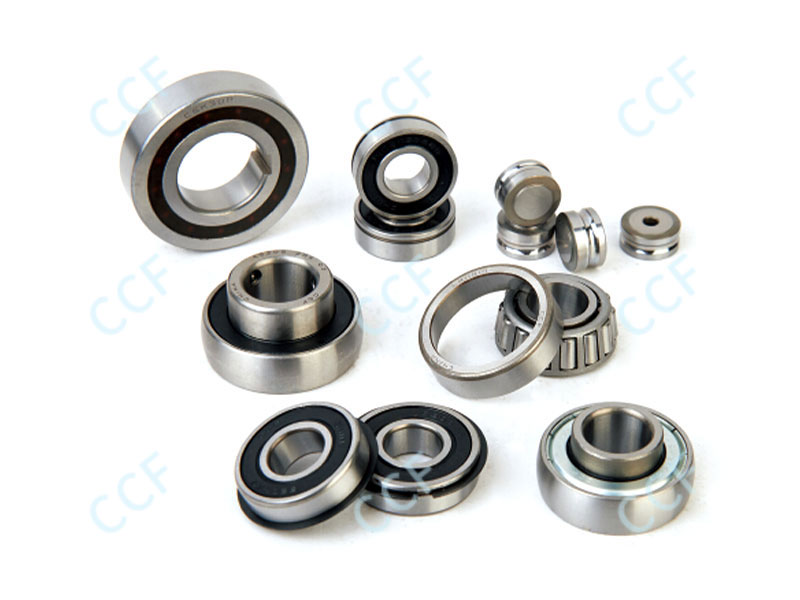Clean bearings regularly
Automotive bearings are exposed to external factors such as dust, sand, and moisture during operation. Once these impurities enter the bearings, they can easily contaminate the grease, increase friction, and accelerate wear. Regular bearing cleaning not only removes impurities from the surface and interior, but also inspects the bearings for cracks, rust, or other surface abnormalities. To clean, first disassemble the bearings, soak them in a special cleaning fluid or gasoline, and gently rotate them to remove impurities. After cleaning, dry them with compressed air or a clean cloth to ensure no residual solvent remains, which could affect the grease.
Apply the appropriate amount of grease
Lubrication is crucial for the proper operation of automotive bearings. Grease not only reduces friction but also prevents damage caused by metal-to-metal contact. When adding grease, choose high-temperature or low-temperature wear-resistant grease suitable for automotive bearings and avoid using substandard lubricants. Avoid adding too much or too little grease. Too much grease increases friction and causes heat, while too little provides ineffective protection. Generally, a ball bearing should be filled with grease that fills one-third to one-half of the bearing clearance.
Regularly Check Bearing Clearance
Automotive bearings may experience fluctuations in clearance over time. Excessive clearance can cause wheel shake and steering instability, while insufficient clearance increases friction and heat generation. Regularly checking bearing clearance can identify problems early and prevent further damage caused by abnormal clearance. The clearance can be measured manually or with specialized measuring tools. Adjust the clearance to the appropriate range according to the manufacturer's technical manual.
Control Bearing Operating Temperature
Bearings generate a certain amount of heat during operation. However, excessive temperatures can cause the grease to lose effectiveness and the metal structure to deform. If you experience an abnormally high wheel temperature while driving, stop and inspect immediately. Effective ways to control bearing temperature include maintaining adequate lubrication, avoiding prolonged overloaded driving, and ensuring the precise fit between the bearing and raceway during installation. Especially before long-distance or high-speed driving, ensure proper lubrication to prevent excessive temperatures from shortening bearing life.

Prevent Moisture and Impurities
Moisture and impurities are significant factors that affect bearing life. Water ingress into the bearing can emulsify the grease, rendering it ineffective. Impurities can also scratch the raceway surface, accelerating fatigue damage. During routine maintenance, ensure bearing seals are intact and inspect them promptly after driving through water or rain. If the grease is found to be abnormally colored or contains impurities, clean and replace it immediately.
Proper Installation and Removal
Improper installation methods can directly affect bearing life. For example, directly striking the bearing with a hammer can damage the raceway or cause internal stress concentrations. During installation, use specialized tools, such as bearing mounting sleeves or hydraulic presses, to ensure uniform and correct force application. During removal, avoid excessive impact on the bearing to prevent damage to mating surfaces or related components.
Proper Vehicle Use
Bearing life is not only related to maintenance but also directly related to driving habits. Frequent sudden acceleration, braking, and overloading can increase bearing loads and shorten service life. Drivers should strive to maintain a steady driving posture to reduce unnecessary impact. Additionally, avoiding prolonged driving in adverse conditions, such as muddy or flooded roads, can effectively extend the bearing's service life.
Replacement Period and Record Management
Even with good maintenance, bearings have a limited service life. A reasonable replacement cycle should be established based on vehicle usage frequency, driving environment, and manufacturer recommendations. The replacement date and model should be noted in the maintenance records. By maintaining a maintenance record, vehicle owners can better understand the use of bearings and prevent failures in advance.
Key Automotive Bearing Maintenance Comparison Table
| Maintenance Method | Description | Recommended Frequency |
|---|---|---|
| Regular Cleaning | Use a clean cloth and appropriate cleaning agent to remove grease, dust, and other debris from the bearing surface, preventing dirt accumulation that could affect operation. | Every 3–6 months |
| Lubrication | Apply suitable grease or oil to ensure smooth bearing rotation and reduce friction and wear. | Every 6 months or as per manufacturer’s recommendation |
| Seal Inspection | Check the bearing seals for cracks, aging, or damage to prevent contaminants from entering the bearing. | Every 6 months |
| Load Check | Ensure the bearing is not subjected to excessive load, as overloading may lead to premature wear or damage. | During each major service |
| Noise Monitoring | Listen for unusual noises during bearing operation, which may indicate internal damage or wear. | Monthly |
| Temperature Monitoring | Measure the bearing operating temperature; abnormal increases could be a sign of lubrication issues or internal wear. | Monthly |
| Alignment Check | Ensure the bearing is correctly aligned with the shaft and housing to prevent uneven wear. | During installation or maintenance |
| Replacement | Replace the bearing if there are signs of severe wear, damage, or cracks. | As needed |
Use genuine or reliable bearings
When replacing bearings, choose genuine parts or certified products whenever possible. Non-standard or inferior bearings may exhibit discrepancies in dimensional accuracy, material strength, and wear resistance, leading to installation difficulties or shortened service life. Selecting reliable bearings not only reduces the risk of failure but also ensures compatibility with the original vehicle system, improving overall safety.
Pay attention to the storage environment
Spare bearings also require proper storage. They should be stored in a dry, well-ventilated environment free of corrosive gases and kept sealed in their original packaging. When bearings are stored for extended periods, it is recommended to regularly inspect the surface for the presence of the anti-rust oil film and reapply anti-rust oil as necessary to prevent rust from affecting subsequent use.